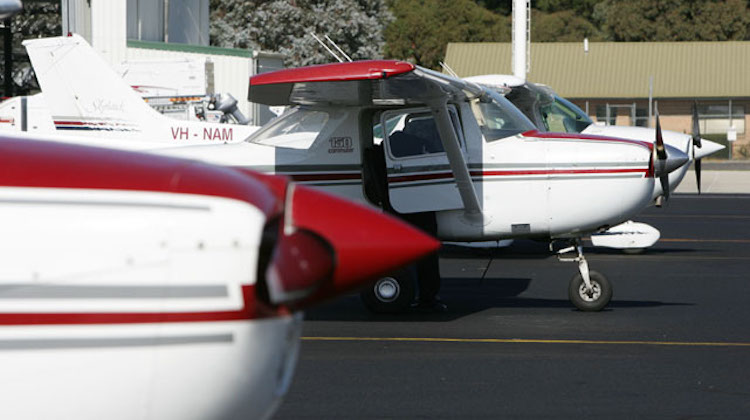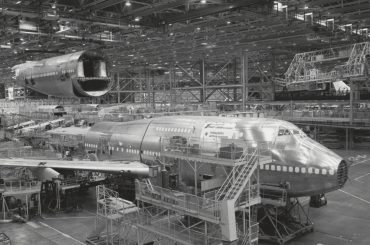In the first of an ongiong series on flight training, Owen Zupp looks at some of the factors prospective pilots should consider when choosing where to learn to fly.

Choosing a flying school is a major first step on your journey in learning to fly. The quality of your flight training is vital and as a customer, you deserve to have certain expectations met.
Beyond value-for-money, consistency is also vital. Chopping and changing between aircraft, flight instructors and constant cancellations can impede progress and ultimately cost dollars. Breaking into the aviation industry is never easy, so it’s important to make a sound start.
Now I won’t pretend for a moment that there’s a magical list to suit all scenarios, but what I can offer are some fundamental requirements that your new flying school should provide you with. Prospective aviation students can often feel like overwhelmed novices when they walk into a new flying school and are immediately surrounded by aviators in uniforms and epaulettes speaking a strange dialect known as “pilot speak”.
What is critical at this stage is that you remember that you are a customer and they are attempting to sell you a service, so listen carefully to the real words between the sales pitch and be careful with your cash. Take the time to chat with current students of the school as well.
Also, do your homework first. Research the aviation regulatory body in your part of the world to see what the minimum requirements are to achieve a licence and then bear in mind that these are absolutely MINIMUM LEGAL REQUIREMENTS. You will require more hours of flight training than this and it will equate to a higher cost.
Additionally, endeavour to define what level of licence you’re seeking. Do you just simply want to go solo to say that you’ve flown an aeroplane or do you aspire to the flight deck of a Boeing 747? Watch out; you might only want to go solo but find yourself hooked!
As such, does the flying school provide comprehensive training all the way through to the commercial pilot’s licence and ratings? The internet is a great tool for researching various schools and finding those in your area. Armed with a little prior knowledge about their school and your goals, you’re now ready to pay a visit to the local airport and seek out a flying school. So let’s start with a couple of key points.
Equipment
What aircraft does the flying school have? Is there a substantial fleet built upon a few types, or is there a “Noah’s Ark” fleet with seemingly two of every type known to man? What you need is a small range of different types, but enough of the type that you will be training in that it won’t be double-booked and leave you stranded or without an aircraft when maintenance falls due. There need to be enough of the aircraft to meet the demands of the school.
Consider the condition of the aircraft. If they are tired and worn out, then that doesn’t suggest much re-investment into the fleet by management. It may be a possible indication of cash-flow issues and a signal that corners might be getting cut elsewhere. Either way, a scrappy looking aeroplane does not reflect the mind-set of a proficient, meticulous pilot, nor does it provide the sort of craft in which you’d like to take a family member aloft.
Remember, equipment is not limited to aeroplanes. What are the offices and briefing rooms like? Are they modern and equipped with good lighting and furnishings? This is where you’ll be undertaking your all-important briefings and sitting exams, so you want a sound learning environment.
People
Behind every good flying school are good people. What is the sense of the school when you first walk in? Are the instructors professionally dressed and polite, or do they look like they’re auditioning for “Top Gun 2“, and you’re kind of in the way?
Is there a mix of junior instructors and senior instructors, or just a few youngsters starting out?
Personally, I have found some brand-new instructors among the most dedicated and proficient in the early phases, but they still need mentoring from the old hands. Equally important is a spread of experience so that you are not kept waiting for a senior instructor to check you as you reach the various tests and milestones.
Furthermore, to train for a commercial licence, ideally, the instructor should have some commercial experience beyond the world of flight instruction.
Take the time to speak with the Chief Flying Instructor. If the CFI doesn’t have time to speak with you on that first day, then make a booking to chat when it’s convenient. If this proves difficult, or impossible, then that isn’t a good indicator at a very early stage.
I have been a CFI and it can be a very demanding job, but a CFI is also part of the management team and should actively assist a new prospective customer.
What is the support staff situation? What do other students think of the school? Is there a full-time receptionist attending to the front desk and enquiries, or are bookings and new clients rated as a secondary duty for the flying instructors?
Interestingly, in my experience, I have found that a common feature of good flying schools is a dedicated staff member attending to the front office duties.
So we have looked at the people and the equipment in choosing a flying school. Next week, we’ll consider administration, longevity and the all-important element of cost of flight training. Until then, safe flying.













